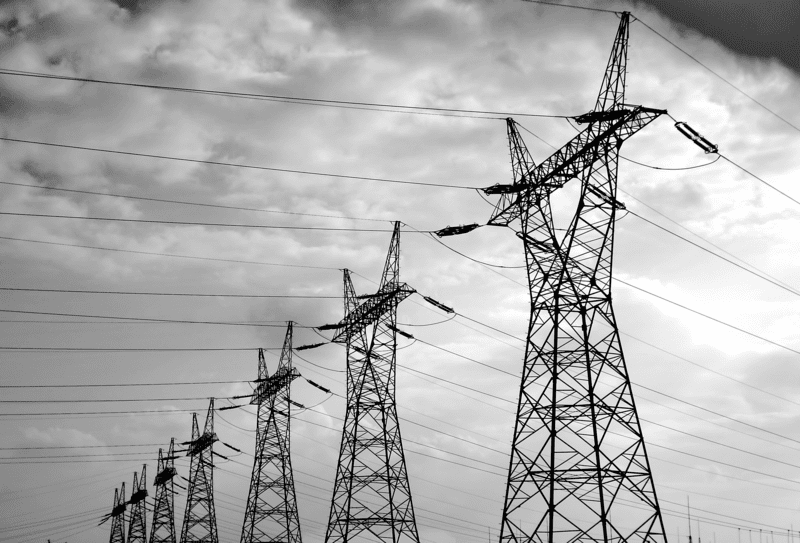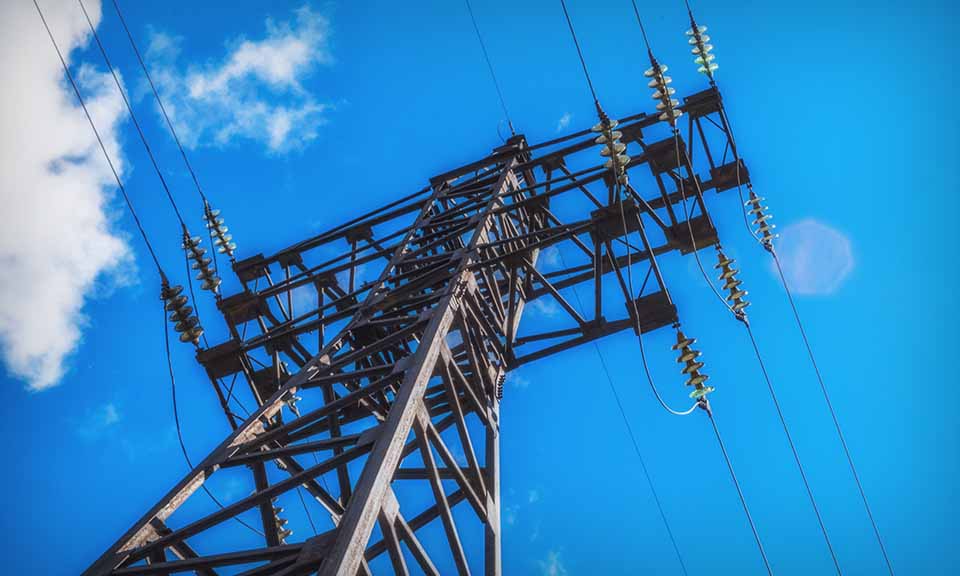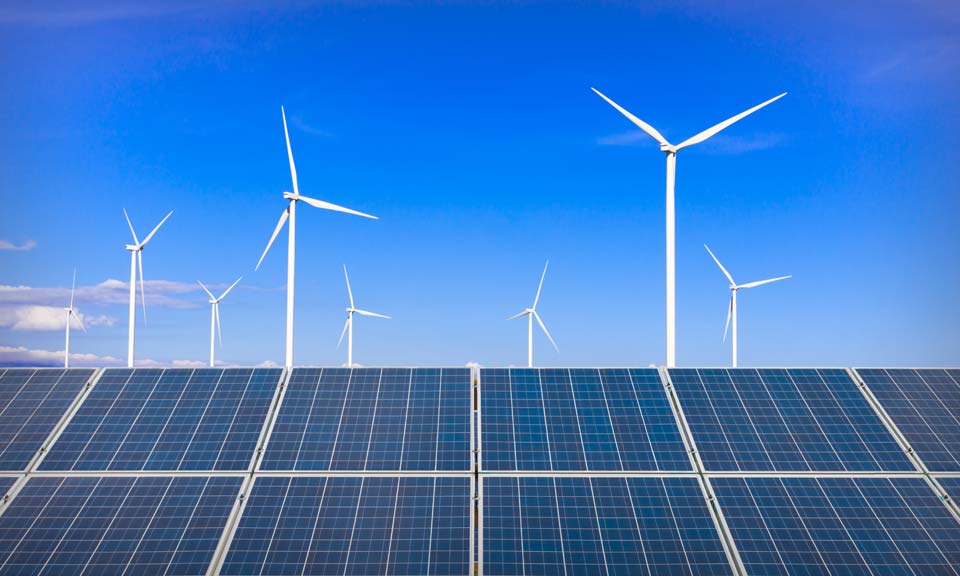Russian gas phaseout and the future of Europe’s power generation

Russia's invasion of Ukraine has triggered a shift in European power production sources and forced the governments to rethink their long-term energy policies.
The European Union is now on track to reduce reliance on Russian gas sharply before eliminating it entirely. Yet, with coal and nuclear phaseouts taking place across Europe – Germany will close its remaining reactors in December and will get rid of all coal by 2030 – natural gas was expected to play a key role in energy transition.
Russian gas flows account for about 40% of all European imports. And there are doubts on whether gas has a future as bridge generation fuel between high-carbon intensity fuels and green energy.
In recent months, coal – the most carbon-intensive fuel – has been having a so-called "renaissance" period to address reduced gas availability. The European Commission said coal burn could rise some 5% above previous expectations over the next five to 10 years. Yet this could only be a short-term solution.
Glenn Rickson, head of European Power Analysis at S&P Global Commodity Insights, expects gas generation to play "a leading role and a leading price setting role in European power markets for many years to come".
That said, the events of the last few months will inevitably have a profound impact on Europe's energy sector.
LNG has proved to be an efficient replacement for the missing Gazprom's volumes even before the Ukraine's invasion started, as Russian imports to Europe already have been well below historical averages in January and most of February.
Deliveries of LNG in April hit a record high for any single month, with aggregated imports into Europe and Turkey equating to 15.995 Bcm of natural gas, S&P Global data showed.
It is likely that LNG supply will help to meet European demand short-term, especially to fill gas storages that have remained well below historical averages so far this year.
Europe has been sourcing LNG supplies from multiple markets, with the majority coming from the US. Qatar, Algeria, Nigeria and Russia were also among the biggest suppliers so far this year.
But sourcing LNG in the spot market is hardly a mid- and especially not a long-term solution. Europe was able to secure supplies in part because Asian demand is typically subdued around this time of the year, and is expected to jump in July before peaking throughout all of winter.
For LNG to become a key part of a solution to phase out Russian gas, Europe needs to agree on long-term contracts. This could be challenging as European buyers are more constrained – as opposed to their Asian counterparts – and can only offer deals for a limited period because of local energy transition regulations.
However, Europe is certainly counting on more LNG to come long-term and is investing heavily in new infrastructure. Germany, for instance, in early May approved speeding up construction of two LNG terminals. Unlike France, the Netherlands and Italy, Germany does not have any LNG terminals.
Russia sending more pipeline gas eastward, when the west stops buying, could leave more LNG available to be directed to Europe, but where exactly the supply will ship will of course also depend on price arbitrage.
Hypothetically, Russian volumes currently sold via TurkStream-2 pipeline to Europe – currently at 16 Bcm/y – could be delivered to Turkey for re-export to Europe and elsewhere, according to Nadia Kazakova, Russia oil and gas strategist at Renaissance Energy Advisors. Higher Russian exports to Turkey could free up some LNG cargoes, which Ankara buys in the spot market.
Russian gas exports to China are expected to increase to around 16 Bcm in 2022 from 10 Bcm in 2021. By 2025 exports will rise to 38 Bcm under a 30-year contract with China's CNPC.
Moreover, in February Russia signed an extra 10 Bcm/y contract to deliver gas from its Sakhalin gas fields to China, although the pipeline extension is still to be built and commissioned.
Also, Russia could potentially deliver 30 Bcm/y of gas from West Siberian fields to China via Mongolia.
"However, this project would require a new 4,000 km pipeline. Russia and China are yet to agree on pricing. In addition, a transit agreement would need to be signed between Russia and Mongolia," Kazakova said.
In any case, while Russian gas will replace – and displace – some LNG deliveries, the Chinese government might want to limit Russia's share in total gas imports to maintain a diversified portfolio of gas suppliers, Kazakova added.
Russia's invasion of Ukraine forced the European Union to make considerable changes its energy strategy, with S&P Global amending its long-term forecasts accordingly. Analysts expect green hydrogen – domestically produced and imported – to play a key role in reducing gas demand in the European power sector.
"It's notable the European Commission doubled down on its climate ambition through its REPower EU strategy, which is focused on reducing Europe's dependency on Russian gas, but inevitably also has wider implications for natural gas in the power sector overall, regardless of the origin country," S&P Global's Rickson said.
Previously, the phasing out of fossil fuels from power generation had ticked the decarbonization box. Now Russia-Ukraine war and subsequent gas flows disruption concerns also mean that a move from gas is also ticking the security supply and affordability boxes.
In the European long-term electricity forecast published in March S&P Global analysts ran two scenarios for Europe's power markets out to 2050. A reference case, which is essentially the "pre-Ukraine invasion outlook" and "a New World case", where the analysts considered the implications of Europe's transition away from gas.
In "the New World case" analysts saw a greater renewables rollout, as well as an accelerated push for hydrogen-fuelled power plants to replace gas units as a backup capacity. This is expected to take place faster and to a greater extent, as opposed to "the pre-invasion" outlook.
In this new scenario, western European unabated gas capacity falls from about 160 GW installed now to about 80 GW by 2035 and to 12 GW by 2050. This is about 22 GW and 4 GW below our reference case, respectively.
S&P Global analysts previously expected gas for power demand to rise until 2027 on the back of nuclear and coal closures. The new assumption is that gas for power demand in Western Europe will fall 10 Bcm/year by 2027 from 2021 level, and further drop to around 25 Bcm/year by 2050.
Gas and power prices have already been way above levels seen in previous years on the back of lower French nuclear availability and low gas stocks across Europe. The invasion of Ukraine only exacerbated the already tight situation.
As one of the outcomes, the market started to pay closer to attention to spark spreads – a margin for power plants that use gas as a fuel to produce electricity. Clean spark spread is a margin that includes costs of carbon emission allowances.
"Sparks spreads are a hot topic right now, since the focus is very much on gas power plants profitability," an Italy-based power trader said.
Indeed, sharp and frequent price swings result in extreme margin changes, even on a daily basis. For instance in Germany, which is particularly dependent on Russian gas and hence more vulnerable to price spikes, spark spreads were seen changing from positive to negative multiple times throughout a month.
To provide the market with a better insight, S&P Global will launch new peakload spark spread calculations for German and UK power markets, and baseload and peakload spark spread calculations for France and the Netherlands June 1. The spreads will be calculated for gas plants with efficiencies of 45%, 50% and 60%.
Multiple market sources highlighted the need for peakload margins visibility in addition to baseload.
"Not loads of the CCGT fleet run during baseload hours, lots will just run peaks because of their lower efficiency as they get older… Overnight prices are very cheap due to lower demand. Overnight demand is not massively important. Overnights dilute the price," a UK-based power trader said.
Spread trading is generally becoming more important to market players, whether these are cross-commodity spreads such as power and gas or location spread, according to Tim Greenwood, sales director for power derivatives at the European Energy Exchange.
"The spreads are very important for the development of both our power and gas markets. This is actually quite logical. In some markets, it is the same trader who has the mandate to hedge gas purchases, hedge power generation and hedge the carbon offset," Greenwood said, adding that price swings resulted in most trading moving to the cleared markets and away from bilateral uncleared trading.
"In addition, trading participants are a lot more sensitive to their cash and collateral management and are appreciating, for example, the ability of cross-margin between our power and gas futures," Greenwood said.
It is fair to say that gas trading will also be important in the long run, even as the key focus is on sustainable energy, including hydrogen, Greenwood added.
While clean energy will certainly displace carbon-intensive fuels in the long term, Europe inevitably has to stick to the "old school" natural gas for now, as long as it remains committed to hitting its ambitious climate targets.

News
A total solar eclipse will cross North America on April 8, resulting in heavily reduced solar power plant output. It will differ from an annular eclipse in that the sun will be entirely blocked by the moon, rather than partially blocked with a visible halo of sunlight. Power markets in Texas and the Mid-Atlantic region are expected to see the biggest impact in solar-powered generation. Related feature: US solar eclipse expected to significantly reduce solar power output in several markets (subscriber content) Click here for the full-size infographic

News
For access to all regions of the US Power Tracker series, subscribe to Platts Connect . (Latest update April 2, 2024) California power prices reached a 15-year low in March as mild weather and lower demand pulled down prices, while Pacific Northwest’s below-normal snowpack is expected to lead to continued weak hydro conditions even as forward trend lowers. Strong mid-day solar output drove California’s gas generation down to minimum levels and congestion of outbound flows from Southern California led to curtailments, Morris Greenberg, senior manager with the low-carbon electricity team at S&P Global Commodity Insights, said. Full feature: US POWER TRACKER: West prices plunge on strong renewables, weak demand (subscriber content) Click here for the full-size infographic
News
Japan's largest power producer tests ammonia as new fuel Energy transition highlights: Our editors and analysts bring together everything you need to know about the industry this week, from renewables to storage to carbon prices. JERA -- Japan's largest power generation company and one of the world’s largest power utilities --started testing ammonia cofiring at one of its largest thermal power plants this week. The project paves the way for the use of ammonia in the power sector on a commercial scale that has never been done before. Currently, ammonia is a largely a feedstock for fertilizer production with some of it going into chemicals. However, ammonia can be combusted with zero carbon emissions and it is one of the pathways being explored for the transportation of hydrogen as it has existing trade flows that can be expanded. These factors allow ammonia to become as an energy transition fuel. JERA started testing ammonia cofiring at its 1 GW No. 4 coal-fired unit at Hekinan thermal power plant in central Japan from April 1, to be carried out through June using about 40,000 mt of ammonia. The 20% cofiring of ammonia is expected to be the world's first at a large commercial coal-fired power plant and is part of a four-year long pilot project. JERA has pledged to commercialize its ammonia cofiring power generation by 2030 and use 100% ammonia as fuel in the 2040s for its 2050 carbon neutrality target. Japan sees great potential in ammonia as a CO2 zero-emission fuel as the country targets to cut its greenhouse gas emissions by 46% by FY 2030-31 from FY 2013-14 levels and achieve carbon neutrality by 2050 . Price of the week: Meanwhile, the price of emission allowances in China’s national compliance carbon market hit a new record on March 29 of Yuan 90.66/mtCO2e ($12.78/mtCO2e), increasing 8.1% week on week, according to Shanghai Environment and Energy Exchange. The steady increase in Chinese carbon prices has been attributed to bullish sentiment and looming deadlines for meeting emissions obligations. Editor’s pick: Premium and free content SPGlobal.com Germany’s SHS launches green hydrogen tender for Saarland steel plants German steel producer Stahl-Holding-Saar has launched a tender to buy up to 50,000 mt of locally produced renewable hydrogen for its Dillinger and Saarstahl plants in Saarland, the company said March 26. SHS and its subsidiaries are due to produce up to 3.5 million mt/year of green steel from 2027/28. The move follows a tender from Thyssenkrupp for large volumes of clean hydrogen for its Duisburg plant in Germany from 2028. Platts Connect New open-source tool aims to inform on environmental impact of hydrogen The Open Hydrogen Initiative released March 25 an open-source tool for determining the carbon intensity of hydrogen as some industry members work to harmonize measurement methodologies. This new tool allows for the calculation of the carbon intensity of hydrogen production at the facility level based on the operational parameters of the facility and its supply chains, “capturing the nuances” of a project’s emissions, OHI Executive Director Zane McDonald Manchin, oil and gas groups urge flexibility, better coordination on methane fee Delays in implementing a fee on oil and gas system methane emissions and new greenhouse gas reporting rules are unfair to regulated companies and run counter to congressional intent, Senate Energy and Natural Resources Chairman Joe Manchin, Democrat-West Virginia, told the Environmental Protection Agency March 26. TES gets tariff, third-party exemption for German LNG, e-natural gas terminal Tree Energy Solutions has secured an exemption from tariff and third-party access regulation for its planned “e-LNG” import terminal at the Green Energy Hub in Wilhelmshaven from the German network regulator BNetzA. BNetzA has exempted the 15-Bcm/year terminal, which will import LNG before switching to green hydrogen-based “electric natural gas” (e-NG), for 20 years from the start of the operations.

News
Industry must be open to new technologies Wind, solar attack natural gas’ market share The energy industry has trapped itself with binary dialogue about being for one type of technology or another, when all resources need to work together to achieve energy transition goals, Tinker Energy Associates CEO Scott Tinker said March 22. The energy transition is not just about one technology, but rather a suite of technologies, panelists said at the CERAWeek by S&P Global energy conference in Houston. “What is nice about renewables and new technology is they're much more democratically distributed around the world,” said Andres Gluski, AES Corporation president and CEO. “The reality is a little bit more complicated. But I also think it's not rocket science.” However, the industry has to be careful about status quo because things are changing rapidly, Gluski added. “In the power industry, we're seeing once in a 100-year events, like floods and heatwaves, etc., occur every year.,” Gluski said. “The weather has changed. That’s the reality.” Industry leaders need to look at how to deliver the electricity with the lowest carbon and in most sustainable way possible, he added. Renewables versus fossil fuels Solar and wind costs have dropped remarkably over the years, Tinker said. “To make it reliable requires something sitting here waiting to back it up … and that something is expensive,” Tinker said about battery storage. “I think we have to be more open and candid about the actual cost of electricity to be integrated.” The domestic production of wind turbines is strong, with battery storage production to come, while domestic of solar panels will take longer, Gluski said. And while renewables do not generate 24 hours a day, coal is not going to come back regardless of political slogans, he added. “For a lot of these new technologies we need the regulators to be on top of it as a lot more is coming," Gluski said. The energy transition has to happen at a pace that’s politically sustainable, said David Victor, a professor of Innovation and Public Policy with the School of Global Policy and Strategy at University of California, San Diego. “I'm really concerned that we are overweighting the familiar,” Victor said. “We are overinvesting in things we know how to do and probably underinvesting in things that we don't yet know how to do.” Glue that holds it together “We got to figure out the glue that holds all this together,” said Hunter Hunt, chairman and CEO of Hunt Energy. There will be less natural gas needed than the industry thinks, but more than environmentalists think, he added. “Wind and solar are absolutely attacking natural gas’ share and they've decimated coal in the industrialized world,” Hunt said. “If natural gas is going to be a transition fuel, the industry needs to do its part to make sure that we're doing it in the right way. The future of energy can be seen in Texas today, Hunt said about the battery storage growth happening. There such a diversity in approaches with new technology and “we need all of it,” said Evelyn Wang, director of the Advanced Research Projects Agency-Energy with the United States Department of Energy. Houston, we have an opportunity “One of the things that is different today versus this time last year, is just explosion of activity in energy transition-related projects in Houston and Gulf Coast,” said Bobby Tudor, CEO Artemis Energy Partners and chairman of the Houston Energy Transition Initiative. “We have enormous competitive advantages here in this region to be a leader, and it's up to us to intentionally do that. … We intend to continue to exploit that advantage.” Texas has the largest concentration of technical talent in the world related to energy systems, Tudor said, adding the state is well positioned for the task due to its ports and access to wind and solar resources. A lot of the development in Texas has to do with permitting and the ability to get projects permitted and done, Tudor said, adding that process is much more difficult in rest of the country. The catch phrase should be “Houston, we have an opportunity” instead of “Houston, we have a problem,” said Atul Arya, S&P Global Commodity Insights senior vice president and chief energy strategist.